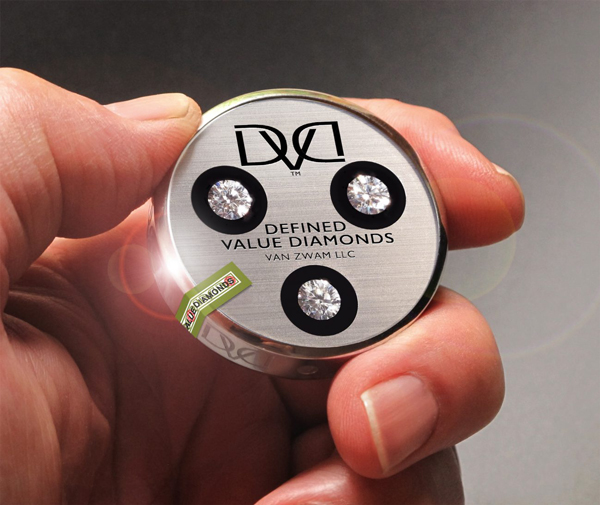Affluent seniors looking for an investment they can understand and cherish are increasingly considering the diamond market, according to Sean Cohen, president of Van Zwam in New York, developer of Defined Value Diamonds.
“Seniors are adding diamond investing to their portfolio in order to be well diversified,” Cohen says, noting that diamonds have shown steady 5 percent average growth per year. “Having seen many ups and downs, they are less trusting of banking institutions, the stock market and other types of investing that are out of their hands and often difficult to understand.”
Van Zwam’s DVD program offers investors diamonds for as little as $1,500 and up to $500,000. Buyers pay the so-called “polished trade price,” essentially the wholesale price that exclusive retailers pay suppliers for their diamonds, or less than half of what the same diamonds would cost when sold as jewelry.

Van Zwam LLC is the wholly owned subsidiary of Rand Diamond, a South African company that started selling diamonds on the international market in 1948. “I am the third generation,” Cohen says. “Our parent company has been supplying our high quality diamonds to top-end retail clients directly in the U.S.A. since 2010.”
Cohen says most of his clients are in the 60 to 80 age group, and their main reason for investing in diamonds is to pass on a gift of great value while they are still alive to loved ones. Diamonds are a simple way to invest and involve no fees, registrations or other administrative burdens. And by selecting the size and number of diamonds they want to buy, seniors can avoid investment scams and high-pressure sales tactics, he says.
A 2016 diamond industry report by the De Beers diamond company noted that “retiring and elderly consumers [are] expected to generate the majority of global urban consumption growth by 2030. … Consumers will continue to become more knowledgeable and push for ethical products with known provenance.”
A DVD study, citing research by McKinsey and Company, showed that polished diamond prices following the 2008 financial crisis rose by 50 percent over their previous peak, partly due to demand in China and the U.S. economic recovery. Slowing Chinese demand then led to a short-term 5 percent drop in polished diamond prices, but that resulted in a 40 percent decline in rough diamond output at mines. “Accordingly, polished diamond prices very quickly began to recover and DVD quality diamonds increased 7 percent in the first two months of 2016,” the report says.
DVD Discs
DVD sells investment-grade diamonds housed in lightweight, stainless-steel and glass display cases. Each disc-shaped case comes with a grading report from the Gemological Institute of America, a nonprofit laboratory that established the modern diamond grading standards in the 1950s. Each diamond also comes with a “Gemprint” ID number that identifies its unique fingerprint and cross-references the GIA report for each diamond.
The GIA report identifies the four components that determine a diamond’s value: color, clarity (purity), carat weight and cut. Carat weight is objective, while the GIA grading gives the color and clarity.
Cut refers to the precision and dimensions to which a diamond is polished in order to emit and disperse the most light and brilliance—this is the only variable where human technical proficiency and artistry are involved. How well this is done has a direct correlation to its value and investment potential. DVD says its diamonds are always triple excellent cut grade, the best quality cut.








